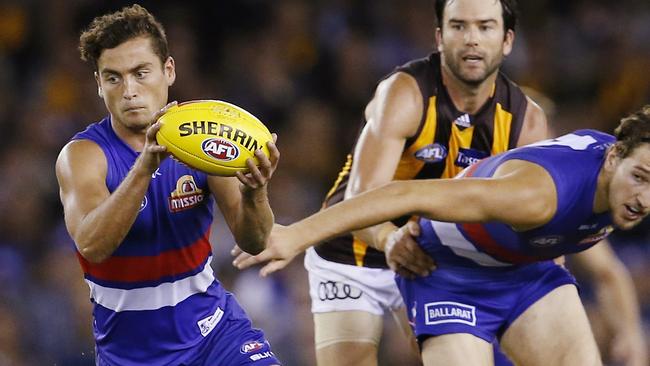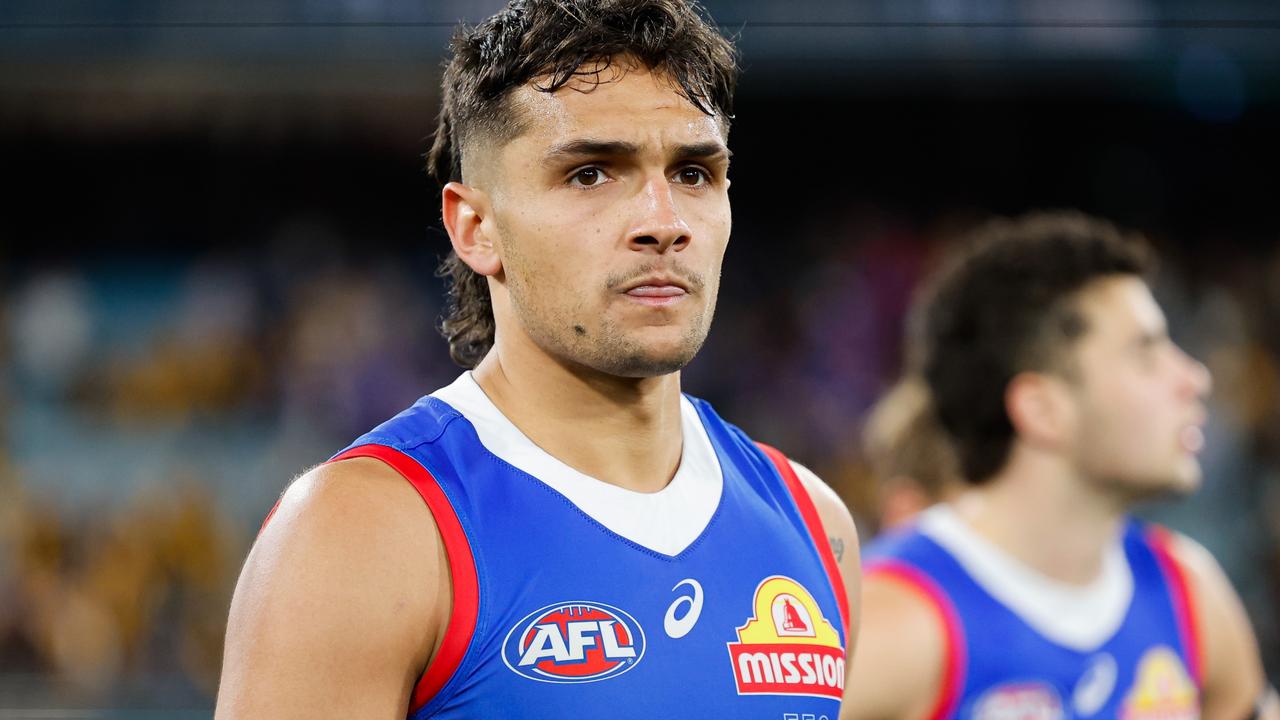Western Bulldogs need to get back to playing attacking footy if they’re to beat West Coast
THE Western Bulldogs have gone from a snarling, pack-hunting unit after 11 rounds to muzzled strays on the eve of the only season that matters.
Bulldogs
Don't miss out on the headlines from Bulldogs. Followed categories will be added to My News.
WHO locked the Dogs up?
The Western Bulldogs have gone from a snarling, pack-hunting unit after 11 rounds to muzzled strays on the eve of the only season that matters.
For all their well-documented injuries — and perhaps because of them — the Dogs enter Thursday night’s elimination final against West Coast at Subiaco a far different beast to the one that started this season in a frenzy.
And if they are to threaten the in-form Eagles on their own deck, the Bulldogs need their bark back.
It was a bark that shook the competition. Luke Beveridge’s high-energy breed of ball hogs surrounded the contest with a high-speed swarm that simply overwhelmed sides.

At the halfway mark of this season, the Western Bulldogs were averaging the biggest contested possession differential (+26.6 points per game) ever recorded after 11 rounds.
At the same stage, the Dogs ranked third all-time in disposal differential (+85.6) and uncontested possession differential (+59). The Dogs were also putting the ball inside 50m an average 13.5 more times per game than their opposition.
They outnumbered at the ball, they won the ball and they monopolised the ball with some of the most exhilarating play we’ve seen.
Then, it stopped.
While the Dogs pushed up to third on the ladder at 12-4, their trademark high-intensity game was showing signs of wear and tear.
Now, as Beveridge’s side prepares to fly west for a cut-throat final on the longest ground in the competition, the high-octane style that had them in the top four for such a large chunk of the campaign is on the blink.

From rounds 12-23, the Dogs barely broke even in contested possession differential (+2.2 per game) and disposal differential (+1.6), while uncontested possession difference — such a strength in the first half of the year — was at -2 per match.
Was it unsustainable anyway? Or did the injuries, which hit the halfback line before striking down the midfield, strip the zest from this side?
Whatever the answer, the Dogs need it back in a hurry if they are to avoid another early September exit.
West Coast, seen to be battling at 7-5, have won nine of their last 10 matches and shown they can cope without Nic Naitanui.
The Bulldogs need to get off the leash again, subdue a red-hot Luke Shuey and somehow keep the game’s best intercept contested marker, Jeremy McGovern, away from the high ball.
It’s time to get the bark back.
ON THE LEASH
How the Bulldogs lost their bark (game averages).
Rounds 1-11 Rounds 12-23
Disposal differential average +85.6 +1.6
Contested possession differential average +26.6 + 2.2
Clearance differential average +8.9 +2.6
Source: CHAMPION DATA
Originally published as Western Bulldogs need to get back to playing attacking footy if they’re to beat West Coast


